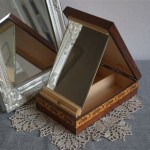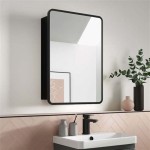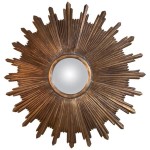How to Mirror iPhone to PC with USB: A Comprehensive Guide
Mirroring an iPhone to a PC via USB offers a stable and often lag-free solution for various purposes, including presentations, gaming, troubleshooting, and enjoying media on a larger screen. Unlike wireless mirroring, a USB connection bypasses potential network instability and offers a more reliable and consistent mirroring experience. This article details several methods and software options available to mirror an iPhone to a PC using a USB cable, outlining the steps required for each and highlighting the advantages and disadvantages.
The process of mirroring an iPhone to a PC involves capturing the iPhone's display output and transmitting it to the computer, where it is then displayed on the monitor. This transmission can be achieved utilizing various software applications that act as intermediaries, facilitating the communication between the iPhone and the PC. These applications often leverage Apple's proprietary protocols or utilize screen recording functionalities to achieve the mirroring effect.
Before commencing the mirroring process, it is essential to ensure that the necessary hardware and software are readily available. This generally includes a compatible Lightning to USB cable, which connects the iPhone to the PC. Additionally, the user needs to install the appropriate software application on the PC that will facilitate the mirroring. Furthermore, ensuring that the iPhone and PC meet the minimum system requirements of the chosen software is crucial for optimal performance.
Different mirroring solutions offer varying features and capabilities. Some may provide basic screen mirroring functionality, while others may include advanced features such as screen recording, control of the iPhone from the PC, and annotation tools. The selection of the appropriate mirroring solution often depends on the specific requirements and objectives of the user.
Using QuickTime Player for Basic Mirroring
QuickTime Player, pre-installed on macOS and available for Windows, provides a basic screen mirroring functionality using a USB connection. While primarily a media player, it possesses the capability to record the iPhone's screen, effectively mirroring it to the PC.
To utilize QuickTime Player for mirroring, connect the iPhone to the PC using the Lightning to USB cable. If prompted on the iPhone, tap "Trust This Computer" to grant the PC access to the device. Once connected, open QuickTime Player on the PC.
In QuickTime Player, navigate to "File" in the menu bar and select "New Movie Recording." This will typically activate the PC's webcam. However, clicking the dropdown arrow next to the record button reveals a list of available cameras. Select the iPhone from this list. The QuickTime Player window will then display the iPhone's screen, effectively mirroring it to the PC.
The primary advantage of using QuickTime Player is its readily available nature. It doesn't require the installation of additional software if QuickTime Player is already present on the PC. However, the functionality is limited to basic screen mirroring. There are no advanced features such as remote control of the iPhone or screen annotation capabilities. Furthermore, performance can be less optimal compared to dedicated mirroring software, particularly with graphically intensive applications.
Furthermore, QuickTime Player on Windows is no longer supported by Apple. While older versions may still function, security vulnerabilities and compatibility issues are potential concerns.
Leveraging Third-Party Mirroring Software
Several third-party software applications are designed specifically for screen mirroring, offering more features and enhanced performance compared to QuickTime Player. These applications often provide functionalities such as screen recording, remote control of the iPhone from the PC, screen annotation, and higher frame rates for smoother mirroring, particularly beneficial for gaming.
Examples of such software include AirMore, ApowerMirror, iTools, and Reflector. The installation process varies depending on the specific software, but generally involves downloading the application from the vendor's website, installing it on the PC, and then connecting the iPhone via USB. Most of these applications require the installation of a companion app on the iPhone itself, facilitating the connection and communication between the two devices.
Once the software is installed on both the PC and the iPhone, launch the application on both devices. The software will typically guide the user through the connection process, which usually involves trusting the PC on the iPhone and enabling USB debugging or a similar setting within the software's interface.
The advantage of using third-party software lies in the enhanced features and performance. Remote control capabilities allow users to interact with the iPhone directly from the PC using the mouse and keyboard. Screen recording functionalities enable capturing the mirrored display for demonstrations or tutorials. Annotation tools facilitate highlighting specific aspects on the screen during presentations or collaborative tasks.
However, third-party software often comes with a cost. While some offer free versions with limited functionality, the full suite of features usually requires a paid license. It is crucial to research different options, compare features, and consider the pricing structure before making a purchase. Additionally, it is important to ensure that the software is reputable and secure to avoid potential malware or privacy concerns.
Before installing any third-party software, it's advisable to read reviews, check the vendor's reputation, and scan the downloaded files with antivirus software to mitigate security risks. Also, confirming compatibility with the operating system version on both the iPhone and the PC is essential to avoid potential functionality issues.
Troubleshooting Common Mirroring Issues
During the mirroring process, users may encounter certain issues that can hinder the experience. Addressing these issues promptly can ensure a smooth and seamless mirroring process. Some common problems include connection failures, lag or stuttering, audio issues, and display problems.
Connection failures often arise due to issues with the USB cable, incorrect settings, or software conflicts. Ensure that the USB cable is properly connected to both the iPhone and the PC. Try using a different USB port or cable to rule out hardware problems. Restarting both the iPhone and the PC can often resolve temporary software glitches that may be interfering with the connection.
Lag or stuttering can occur due to insufficient system resources on the PC or network congestion if wireless mirroring is also active concurrently. Close unnecessary applications on the PC to free up system resources. If possible, disable Wi-Fi on the iPhone during USB mirroring to ensure that all data transmission occurs through the USB connection. Lowering the mirroring resolution within the software settings can also reduce lag, particularly on older or less powerful PCs.
Audio issues, such as no sound or distorted sound, can be caused by incorrect audio output settings on the PC or within the mirroring software. Check the audio output settings on the PC to ensure that the correct audio device is selected. In the mirroring software, verify that audio mirroring is enabled and that the audio volume is appropriately adjusted. If necessary, restart the audio service on the PC to resolve potential audio driver issues.
Display problems, such as a black screen or distorted image, can be attributed to display driver issues on the PC or compatibility problems with the mirroring software. Update the display drivers on the PC to the latest version. Try adjusting the display resolution and refresh rate on the PC to match the iPhone's display settings. If the problem persists, try a different mirroring software to rule out compatibility issues.
Furthermore, ensuring that the iPhone's screen orientation is unlocked (allowing it to rotate freely) can prevent display issues when switching between portrait and landscape modes during mirroring. Some mirroring applications may also offer settings to optimize display performance, such as adjusting frame rates or enabling hardware acceleration.
In cases where persistent issues arise, consulting the documentation or support resources provided by the mirroring software vendor can often provide valuable troubleshooting guidance. Online forums and communities dedicated to screen mirroring can also offer assistance and insights from other users who may have encountered similar problems.
By following these troubleshooting steps, users can effectively address common mirroring issues and ensure a stable and reliable connection between their iPhone and PC. Regular updates to both the iPhone and the mirroring software can also help to prevent potential compatibility issues and ensure optimal performance.

How To Mirror Iphone Pc Via Usb 4 Proven Ways Solo Net

Best Ways To Mirror Iphone Pc Via Usb Without Wifi

Best Ways To Display Iphone Screen On Pc Via Usb

Newest How To Mirror Iphone Pc Via Usb

Top 3 Ways To Mirror Iphone Pc Via Usb

4 Ways How To Mirror Iphone Pc Via Usb Airdroid

Top 3 Ways To Mirror Iphone Pc Via Usb

How To Mirror Iphone Pc Laptop Mac Full Guide

4 Ways How To Mirror Iphone Pc Via Usb Airdroid

How To Mirror Iphone Pc Via Usb New Guide








